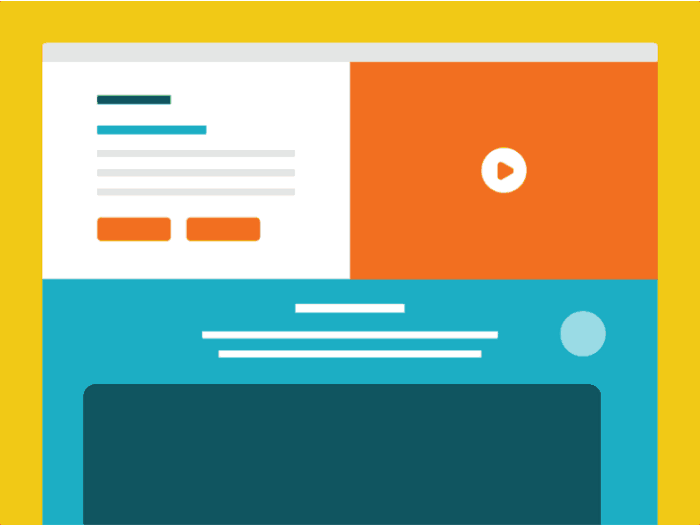
“UX”, or “User Experience Design” is how a user feels when they use a specific product or service. It encompasses a variety of feelings including emotions, senses, and physical interaction.
When you consider that nearly 80% of buyers will quickly bounce from a site if they don’t like what they find, and will quickly choose another site, you can see how UX design would be of prime importance to all ambitious marketers.
For B2C marketers, UX design is easy, as those folks want to make a purchase in the shortest amount of time possible.
For B2B marketers, you have a bit tougher mountain to climb, as organizational decision making may involve several people in varying key roles that will each have their own opinions and buyers’ journeys.
Thus, the B2b buying process can take weeks, and so UX design are paramount if you hope to keep your prospects on the hook up until it’s time for them to make a positive buying decision.
Why is UX design important?
Good UX design creates a positive experience for your user by anticipating and fulfilling their needs. Any successful product or service, such as a website or app, needs good UX design. With it, customers will remain satisfied and (ideally) loyal to your business. Without it, user can be left frustrated and bitter with product resulting in, ultimately, fewer users.
How to Develop User Experience Design for Digital Product Process in 4 Steps
1. Product Definition
The first step in the overall process is defining the product. Think of it as the foundation on top of which you can start building. This represents a crucial step for many reasons, but mainly it’s because you can not build a product without understanding its context & its reason for existence.
This phase usually starts with a few meetings and discussions between the product designer/s and the stakeholder/s of the project, in order to define the scope of the product, understand the requirements and gather insights about the goals that the company has, not only for the product itself but for the entire business behind it as well.
2. Research
After you know that this project is in line with your core mission, and you know what questions you’re trying to solve, you need to conduct research. Your user research is going to be the life blood of your project. The things you discover and unearth during this stage lays the foundation for how your entire project will turn out. The most dangerous thing you can do as a designer is not challenge your assumptions. Good user research challenges all your assumptions.
Some good methods of user research:
- Interviews
This is when you sit down with someone from your target audience and ask them pointed questions about their issues. What are they struggling with? What are they looking for in your product? Face to face interviews are preferred since you can gauge their verbal and nonverbal reactions but video or phone call can work as well.
- User/Focus groups
This is when you have a group of 3–5 target users and have them discuss their attitudes, emotions, and frustrations with an issue or product.
- Surveys
These are questionnaires you send out to your target users. These are good for finding out your users’ attitudes towards a specific topic with the added benefit of receiving the data as soon as the users are done with the survey. However, you have to be careful not to use leading questions that could disproportionately impact the results.
3. Ideate and Test
Once there is clarity on the problem being solved and the user’s needs, the next phase in the UX process is generating different possible solutions that will meet business needs and user needs, and that will be technically feasible. Here, divergent thinking comes into play with the ideal starting point is to create a high volume of ideas through sketching and experimentation. Over time, these ideas get down-selected and refined through feedback and design critiques. This is the process of converging — narrowing down the possible approaches to one or two to develop further and test.
During this phase, the transition to building the product may begin, building interactive front end prototypes to test with, or starting to prepare back end infrastructure needed to develop the product. Usability Matters’ usability testing tip sheet is a great resource to use when planning testing.
Must haves for this phase:
- A volume of low-fidelity ideas on paper or whiteboard
- Testing concepts with users, even if guerilla style
- Confidence that usability issues have been eliminated
4. Iterate the Solution
Once the team or UX designer is confident that the proposed solution will work for users and move the needle on the desired business metrics, the project transitions into build and launch mode. For the UX designer, this can involve producing assets for the development team (or working with a visual designer to do so), and generally being involved during the implementation phase to ensure that the design intent is being carried through to the final product.
The User Experience design process will very much depend on the context that a designer is working in, and the type of problem they are solving. Time and budget are always constraints which a process needs to adapt to. What’s important for UX designers is that they are effectively solving the problems that their teams and clients are asking them to solve. To do this, there will always be some form of scoping and research, ideation and testing, and building and measurement.
Let’s Design A Digital Product with Sagara Technology
You have an awesome product idea; we have the perfect strategy to bring that idea to life. At Sagara Technology, we partner with B2B startups like yours to build web development/ mobile application development. Let’s talk about your unique vision, as well as any challenges standing in your way, so we can make your vision a reality.

